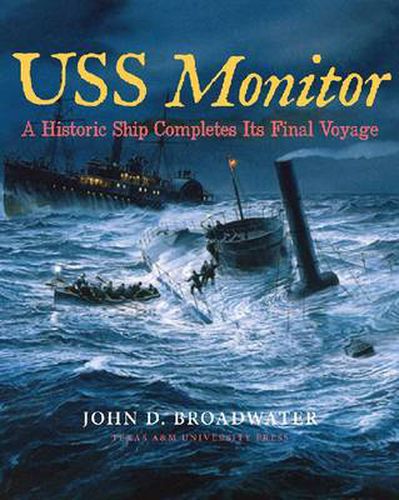Readings Newsletter
Become a Readings Member to make your shopping experience even easier.
Sign in or sign up for free!
You’re not far away from qualifying for FREE standard shipping within Australia
You’ve qualified for FREE standard shipping within Australia
The cart is loading…






A hundred and fifty years ago, naval warfare entered a new phase with the introduction of ironclad vessels. On March 9, 1862, the USS Monitor, prototype of this new class of warships, fought the Confederate ironclad CSS Virginia at Hampton Roads, Virginia, after the Virginia had ravaged the Union fleet blockading the James River, sinking larger, seemingly more powerful wooden warships in a potent demonstration of the power of an armored, heavily-gunned, steam-powered warship.
In the world’s first clash between iron-armored warships, Monitor and Virginia exchanged gunfire at close range for nearly four hours. Neither inflicted serious damage on the other. While a technical stalemate, the events at Hampton Roads changed naval warfare forever. In the United States and abroad, iron and steam would soon replace wood and sail for warship construction. Less than nine months later, the now-famous Monitor was under tow, heading south to Beaufort, North Carolina, when she sank in heavy seas, with substantial loss of life.
Monitor was a total and irretrievable loss; even the location of her final resting place became a mystery. Not until 1973 was the inverted hull located, and in 1974 excavation of the wreck began, under the auspices of the National Oceanic and Atmospheric Administration in partnership with the US Navy. The decision to place the Monitor in a protected zone-a national marine sanctuary-marked another historic first for the vessel. The story of this decision, the raising of the turret, and the subsequent management of the historic resource adds another layer of history to the Monitor’s fascinating story.
Sidebars in the book flesh out details and add anecdotal color to the story of Monitor and of the efforts to preserve and interpret the site. Lavish illustrations (photographs, site drawings, and artifact sketches) complement the informative and highly readable account by the archaeologist who planned and directed the major expeditions that resulted in recovery of many of the Monitor’s most significant objects, as well as the remains of two Union soldiers who were only recently interred in Arlington National Cemetery, more than 150 years after their deaths.
$9.00 standard shipping within Australia
FREE standard shipping within Australia for orders over $100.00
Express & International shipping calculated at checkout
A hundred and fifty years ago, naval warfare entered a new phase with the introduction of ironclad vessels. On March 9, 1862, the USS Monitor, prototype of this new class of warships, fought the Confederate ironclad CSS Virginia at Hampton Roads, Virginia, after the Virginia had ravaged the Union fleet blockading the James River, sinking larger, seemingly more powerful wooden warships in a potent demonstration of the power of an armored, heavily-gunned, steam-powered warship.
In the world’s first clash between iron-armored warships, Monitor and Virginia exchanged gunfire at close range for nearly four hours. Neither inflicted serious damage on the other. While a technical stalemate, the events at Hampton Roads changed naval warfare forever. In the United States and abroad, iron and steam would soon replace wood and sail for warship construction. Less than nine months later, the now-famous Monitor was under tow, heading south to Beaufort, North Carolina, when she sank in heavy seas, with substantial loss of life.
Monitor was a total and irretrievable loss; even the location of her final resting place became a mystery. Not until 1973 was the inverted hull located, and in 1974 excavation of the wreck began, under the auspices of the National Oceanic and Atmospheric Administration in partnership with the US Navy. The decision to place the Monitor in a protected zone-a national marine sanctuary-marked another historic first for the vessel. The story of this decision, the raising of the turret, and the subsequent management of the historic resource adds another layer of history to the Monitor’s fascinating story.
Sidebars in the book flesh out details and add anecdotal color to the story of Monitor and of the efforts to preserve and interpret the site. Lavish illustrations (photographs, site drawings, and artifact sketches) complement the informative and highly readable account by the archaeologist who planned and directed the major expeditions that resulted in recovery of many of the Monitor’s most significant objects, as well as the remains of two Union soldiers who were only recently interred in Arlington National Cemetery, more than 150 years after their deaths.